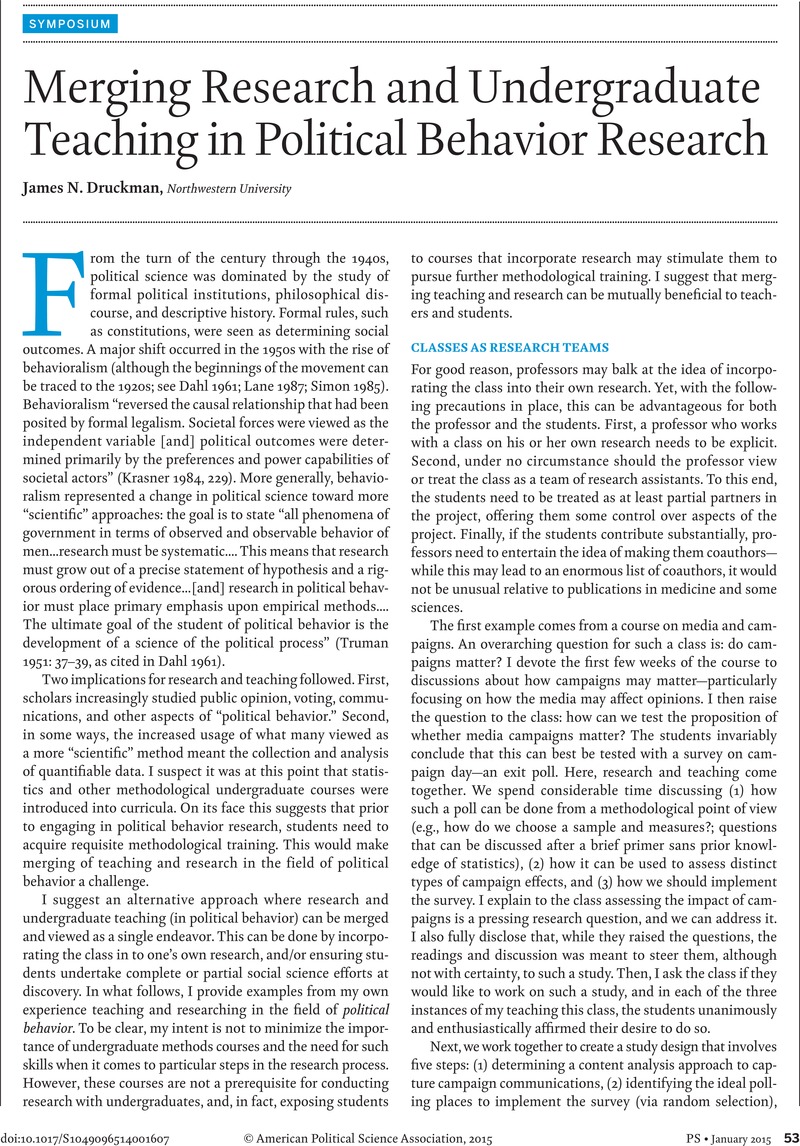Crossref Citations
This article has been cited by the following publications. This list is generated based on data provided by Crossref.
Johs-Artisensi, Jennifer L.
Olson, Douglas M.
and
Nahm, Abraham Y.
2016.
Development of a self-assessment tool to facilitate decision-making in choosing a long term care administration major.
Educational Gerontology,
Vol. 42,
Issue. 1,
p.
1.
Anson, Ian G.
2021.
Goal Orientation in Political Science Research Instruction.
Journal of Political Science Education,
Vol. 17,
Issue. sup1,
p.
403.
Weinschenk, Aaron C.
2021.
Creating and Implementing an Undergraduate Research Lab in Political Science.
Journal of Political Science Education,
Vol. 17,
Issue. sup1,
p.
284.
Marleku, Alfred
Peshkopia, Ridvan
and
Voss, D. Stephen
2023.
The Palgrave Handbook of Teaching and Research in Political Science.
p.
181.
Marleku, Alfred
Peshkopia, Ridvan
and
Voss, D. Stephen
2024.
Research-oriented Studies in Political Science: How Research Collaboration Shapes Southeast European Student Learning Preferences.
Journal of Political Science Education,
Vol. 20,
Issue. 1,
p.
31.
Ismaili, Diturije
Peshkopia, Ridvan
and
Sako, Marsela
2025.
Political Science as a Science.
Science & Education,



